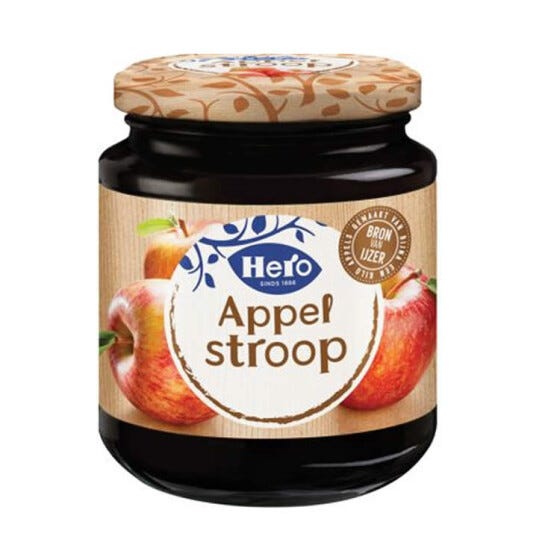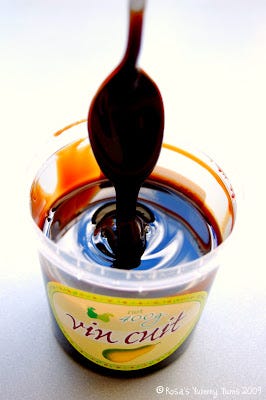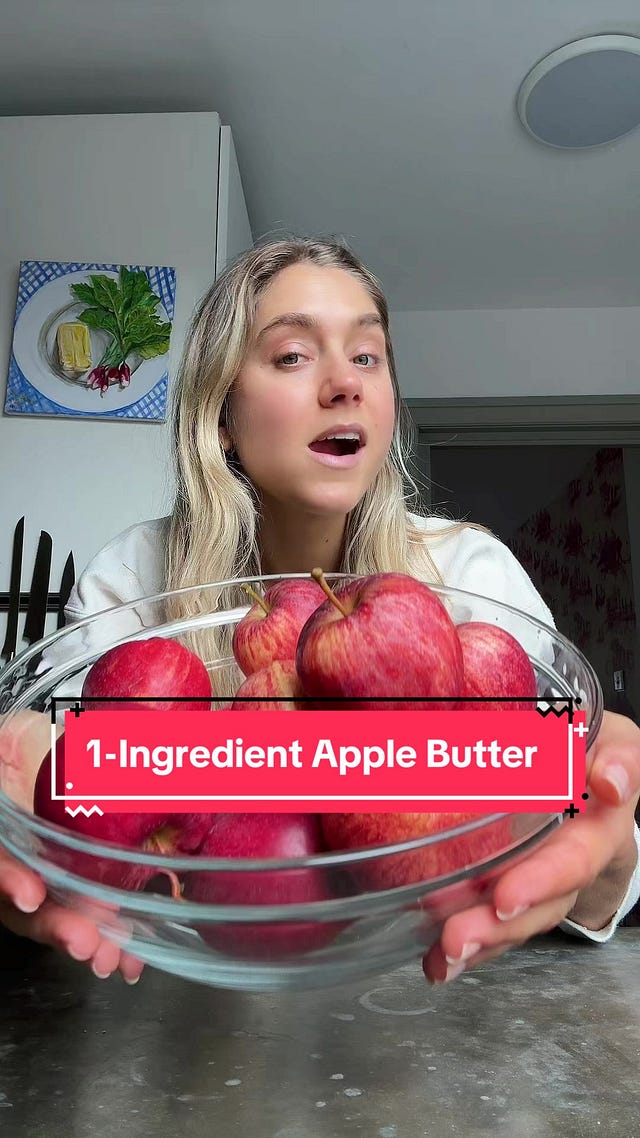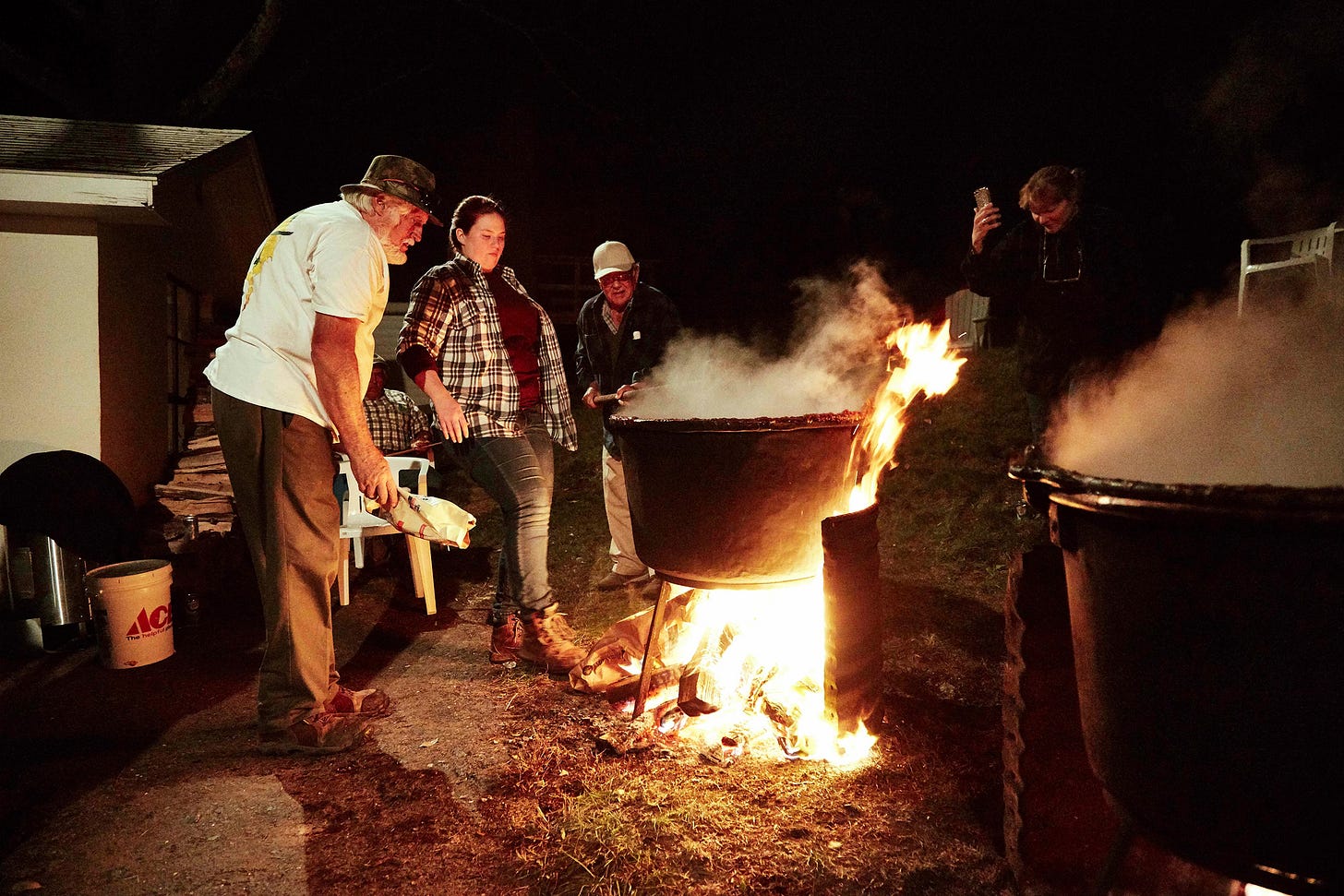I always get homesick for the US around this time of year but there’s nothing flavor can’t fix. If you own my book, you’ll know that taste is comprised of the 5 senses - savory, sweet, bitter, acid, and umami - but flavor is made up of color, texture, smell, and most importantly nostalgia and memory.
Whenever I miss my childhood, I whip up a condiment to transport me back in time and taste my memories. I have so many core memories that occurred around Thanksgiving, which explains why I love cozy, autumnal, warming spices. One of the key fall condiments for me is apple butter, a condiment I rarely see in the UK, that I simply had to recreate this week. For an apple jelly recipe, turn to page 94 in The Condiment Book.


I won’t lie to you, making apple butter is a pain. Well, it usually is, unless you use my semi-hack method. My mom always taught me to just pop everything into the oven rather than making it on my stovetop - that way, there was no need to stand over the hob, stirring incessantly. If you’ve never had apple butter, think of it as a thick, sweet, usually spiced, spread made from apples. There’s no butter in it whatsoever! It’s delicious on toast, pancakes, waffles, any and all autumnal breakfasts really, as well as alongside poultry and pork.
I should also mention that I’m a purist. I don’t tend to add any additional ingredients other than apples (and an optional apple offshoot which you can find in the recipe below) to celebrate the fruit’s peak season. There are really so many ways to make apple butter, this is just the way I like to make it! If you’ve made apple butter before, test it out and let me know your thoughts on the method.
 Tiktok failed to load.
Tiktok failed to load.Enable 3rd party cookies or use another browser
Before getting into the recipe, it would be wrong of me to skip over the history of apple butter… I’m working on an apple history substack at the moment but my goodness, there is so much information to share and I wouldn’t want to rush it and skip over all the fun, juicy anecdotes. I’m hoping to make my way to an orchard as well to interview some apple growers and get you all of the deets my peeps!
Apple Butter History
If you’ve read my book you’ll know that most condiments were born either out of necessity or as a way to reduce waste. Apple butter falls into the latter category as it originated as a way to store apples without the need for refrigeration, which at the time was nonexistent.
You can trace the cooking down of apples for long periods of time all the way back to the time of the Ancient Greeks and Romans. Flash-forward a bit to Medieval Europe and you begin to see literal apple butter as a spread made in both modern-day Belgium and Germany. In the Middle Ages, lots of monasteries began appearing, and many of these were home to vast orchards. The monks weren’t going to let all of these apples go to waste so they began producing apple butter as a means to conserve the fruit. The way they made it was labor-intensive to say the least - they’d add apples, apple cider or water, and sugar into a large copper pot and stir for hours and hours until it was finally extra thick.
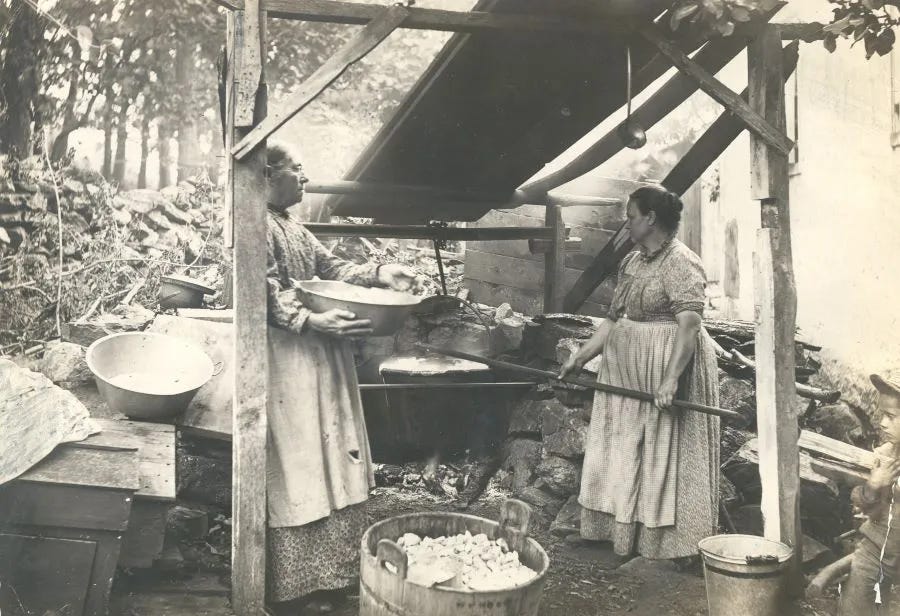
So why is it so common in America? Despite being called the Pennsylvania Dutch, this group is actually from the Palatinate region of Germany, where apple butter was common. They began emigrating to the US in the 17th century and brought with them the tradition of making apple butter which was an important, laborious, and time-consuming family affair. To this day in Appalachia and the American South, making apple butter is a communal autumnal activity. You can read more about it here in The Washington Post.
Although many apple butter recipes were published, the ingredients and the recipe were nearly identical. The one below is from the 1891 cookbook by Miss E. Neill, “The Every-Day Cook-Book and Encyclopedia of Practical Recipes For Family Use”. It was made differently than most recipes today but the gist of it and the final product is similar:
Boil one barrel of new cider down half, peel and core three bushels of good cooking apples; when the cider has boiled to half the quantity, add the apples, and when soft, stir constantly for from eight to ten hours. If done it will adhere to an inverted plate. Put away in stone jars (not earthen ware), covering first with writing-paper cut to fit the jar, and press down closely upon the apple butter; cover the whole with thick brown paper snugly tied down.
Also, please enjoy quite possibly the dumbest amazon review I’ve ever read. Literally wtf Rob?? Imagine buying this historic cookbook and going out of your way to review it negatively.
Nowadays, the spread is common across the world, each culture putting their own spin on the recipe and its pairings. In the Netherlands appelstroop is eaten with cheese, in Japan they make apple butter with actual butter and Fuji apples, in Jersey apple butter includes licorice and is known as black butter, in Belgium Sirop de Liège includes pears, in Russia povidlo is made by sometimes adding in different fruit such as apricots, in Poland it’s made with plums, and in Switzerland the common Vin Cuit is actually made from apple or pear juice! If your family or culture also makes a variation of apple butter, let me know in the comments below!
